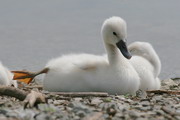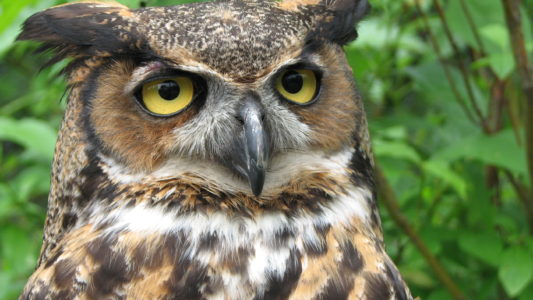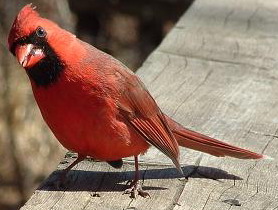#BurlON Birding

March 28, 2021
NOTE: With changes happening rapidly due to COVID19 we recommend that you contact the sites before visiting to make sure they are still open.
Who knew that Bird watching is the fastest growing hobby in the world?! The beauty of birding is that an amateur like me has just as good a chance at making that rare bird sighting as a professional. Here’s some information about #BurlON Birding.
 One of the best-kept secrets is that the western end of Lake Ontario (Cootes to Escarpment Park System) including Burlington, offers a variety of sites where birders (amateur or avid) can see close to 300 bird species.
One of the best-kept secrets is that the western end of Lake Ontario (Cootes to Escarpment Park System) including Burlington, offers a variety of sites where birders (amateur or avid) can see close to 300 bird species.
A few years ago we decided to add more content on our website about birding in Burlington and looked to our friends from RBG, Conservation Halton, the Bruce Trail, Bronte Creek, and Hamilton Naturalist Clubs to help us out. They provided most of the content for our Birding webpages and from those discussions we created resources for visitors and residents. We have identified some prime birding locations, a birding map by season, birding checklist and etiquette so we don’t frighten off our fine feathered friends. We have also produced a birding brochure with the map and tips. Stop into our visitor centre for a copy.
Making a Comeback
Bald eagles, all but locally extinct in the 1980s, are now making a comeback right here in Burlington. Several Bald Eagles have overwintered in Cootes Paradise at Royal Botanical Gardens and in March 2013 the first eaglets to hatch on the Canadian shoreline of Lake Ontario in 50 years were hatched. So why is this part of the lake so ideal for bald eagles? They actually need at least 100 hectares of undisturbed forest to nest and roost, plus an adjacent 50 hectares of wetlands to allow them to catch fish so Cootes Paradise is a perfect place to call home.
Did You Know: In the 1980’s there were only four active
bald eagle nests in all of the Great Lakes!
The RBG is an excellent location to see birds year-round while enjoying the beautiful gardens and they have many access points including Princess Point, Rock Chapel, Westdale, Cherry Hill Gate, Rock Garden, Laking Garden, and the Arboretum. The birding experience can be very relaxing you can watch nighthawks and swifts during the evening summer music series in Hendrie Park at the RBG. Try visiting the Garden areas during spring bloom festivals and you may see common species such as Broadwing Hawks during Rock Garden tulips, Rose-breasted Grosbeaks during Arboretum lilacs, Baltimore Orioles during Laking Garden irises, and Chimney Swifts during Hendrie Park roses.
The Long Watch and Marsh Monitoring Program are two volunteer programs keeping tabs on bird numbers, and numerous conservation projects are underway to maintain and restore habitat. To participate in scientific bird monitoring and conservation projects at RBG contact.
 Trumpeter Swans, the largest swan in the world had all but vanished from Ontario in 1886 due to hunting. With the help of dedicated conservationists and volunteers they have been brought back to south-central Ontario and 200 swans flock to the shores of LaSalle Park in Burlington to winter over, arriving in November and returning in April to their nesting grounds in the north. The harbour is perfectly situated to provide shelter from the cold north and easterly winds; it has a beach area where they can rest; there is an abundance of aquatic plants for them to feed on and the water is shallow enough near shore for them to tip to feed (they don’t dive). I often stop to take photos at LaSalle Marina in the winter and enjoy watching the graceful movement of the swans in the cold gray water.
Trumpeter Swans, the largest swan in the world had all but vanished from Ontario in 1886 due to hunting. With the help of dedicated conservationists and volunteers they have been brought back to south-central Ontario and 200 swans flock to the shores of LaSalle Park in Burlington to winter over, arriving in November and returning in April to their nesting grounds in the north. The harbour is perfectly situated to provide shelter from the cold north and easterly winds; it has a beach area where they can rest; there is an abundance of aquatic plants for them to feed on and the water is shallow enough near shore for them to tip to feed (they don’t dive). I often stop to take photos at LaSalle Marina in the winter and enjoy watching the graceful movement of the swans in the cold gray water.
Did You Know: Trumpeter Swans Mate for Life!
Welcome New Residents
Burlington is now home to species that only recently have become established in Ontario including: Carolina Wren, Northern Mockingbird, and Red-bellied Woodpecker. They must have heard that we are the best mid-sized city in Canada! I never really thought about how the Mockingbird got its name but it can imitate not only birds but other animals and mechanical sounds such as car alarms. Now that is a good party trick!
 Birds of Prey
Birds of Prey
I heard an owl late one night and when I scrambled to the window I could see the shadow of a Horned Owl in the top of our pine tree and could hear its mate’s haunting response. Screech Owls and Great Horned Owls are quite common, although rarely seen in the area as they are night owls (of course). I have had a chance to get up close and personal with a few of the raptors from Mountsberg Conservation Area including a barn owl and great horned owl and they are fascinating creatures to watch and learn about from the educators.
Other raptors such as Coopers and Sharp Shinned Hawks and Turkey Vultures are found all year round and the best places to see them are Mount Nemo, Rattlesnake Point and Kelso Conservation Areas and Kerncliff Park. The cliffs in these locations create updrafts which these birds use to gain height. If you don’t have luck seeing these birds of prey in the wild, you can visit the Douglas G Cockburn Raptor Centre located at Mountsberg Conservation Area. This centre is currently home to 15 different species of native birds of prey, many who have permanent injuries and can’t survive on their own in the wild. Often, these injuries are caused by human activity, but with the help of these feathered ambassadors, the community can learn about how to share our environment with native birds of prey, and how to reduce the negative impact we might have on them. You can even book a 45 minute private Raptor Encounter session with the educators from the Raptor Centre to get a behind the scenes look at raptors feeding, housing etc. If you enjoy photography Conservation Halton also offers courses at Mountsberg where you can learn to take fabulous photos of the raptors and their habitat.
Did You Know: You can get nose to beak with the permanent residents
of the Raptor Centre – meet them on Facebook.
10 Cool Things I Learned About Birds
- Trumpeter Swans are the largest swans in the world!
- Bald Eagles require both forest and wetlands for nesting.
- Cormorant droppings are poisonous to trees.
- Northern Mockingbirds can imitate birds, other animals and mechanical sounds.
- The Red Bellied Woodpecker actually has a red head not belly.
- Not all Raptors play basketball!
- Conservation Halton features the Turkey Vulture in their logo and these birds can weigh up to 5 pounds.
- Local volunteer efforts have helped endangered Trumpeter Swans, Bald Eagles and Eastern Loggerhead Shrikes make a comeback.
- Families flock (pun intended) to RBG to hand feed the chickadees.
- Pelicans occasionally stop off along our waterfront on their migration from northern Ontario to the Gulf of Mexico and Pacific coast. (I was christened recently by a Pelican down in the Carolinas – cheeky bird!)
 At home our family has been entertained by numerous birds setting up house in our yard. The robins make their first appearance early in the spring when the weather is still quite cool. The Blue Jays noisily announce their presence causing the squirrels to chatter back and creating lots of entertaining races along our fence. The colourful cardinal couple who have such a beautiful song now return annually to raise another family. The starlings have several nests around our pool and like to drop waste bombs from their nests – my hubby is not a fan and has put up lots of obstacles to try to keep them away! Every summer we look forward to welcoming back the hummingbirds who love to dart among our perennials and feeder at dusk and usually stay until early September before heading south to warmer winter climates.
At home our family has been entertained by numerous birds setting up house in our yard. The robins make their first appearance early in the spring when the weather is still quite cool. The Blue Jays noisily announce their presence causing the squirrels to chatter back and creating lots of entertaining races along our fence. The colourful cardinal couple who have such a beautiful song now return annually to raise another family. The starlings have several nests around our pool and like to drop waste bombs from their nests – my hubby is not a fan and has put up lots of obstacles to try to keep them away! Every summer we look forward to welcoming back the hummingbirds who love to dart among our perennials and feeder at dusk and usually stay until early September before heading south to warmer winter climates.